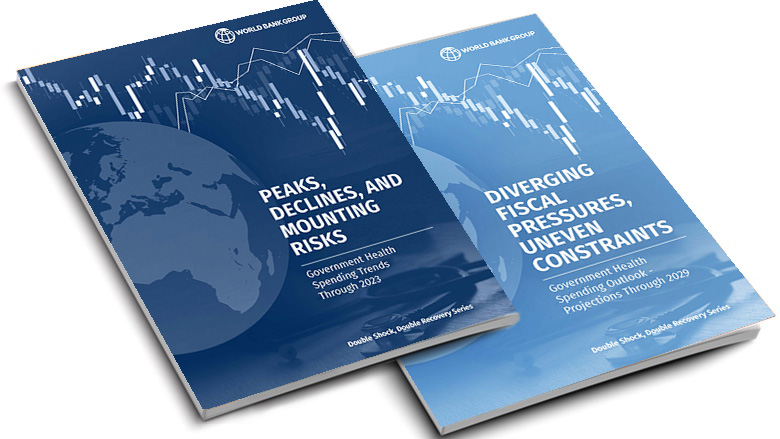KEY MESSAGES - Strong Advance, Early Retreat | June 2023 Trends
During the first two years of the COVID-19 pandemic, central government health expenditures soared in developing countries as governments began prioritizing health in their spending to combat the initial onset of the virus.
- In 2020, real per capita central government health spending grew on average by 21% (in 78 developing countries), and in 2021, it stood at 25% above 2019 levels.
- The strong advance over the first two years of the pandemic was primarily driven by governments prioritizing health in their spending. By 2021, the health share in central government spending had grown 17% since 2019.
- In contrast, general government spending rose by just 6% since 2019.
After the initial strong response to the pandemic, health spending is no longer a priority for many governments.
- In 2022, government health spending contracted, from its peak of 25% to only 13% over the 2019 baseline, bringing it close to its pre-pandemic trajectory.
- The reversal was even starker in the priority that governments gave to health. In nearly half of the countries, the central health share in general government spending fell below 2019 levels.
- In turn, in 2022, it was growth in general government expenditure spending that primarily bolstered central government health spending above 2019 levels.
Rapid action of governments will be necessary to secure the prioritization of health spending and avoid further setbacks on the path toward the health-related SDGs.
- As governments started to cut back on health spending in 2022, the Omicron variant caused another wave of COVID-19 infections and death worldwide, and many health systems struggled to cope with the backlog of non-COVID-19 services from earlier service disruptions.
- Especially in countries where the macroeconomic outlook remains concerning with limited capacity to increase government spending, the reversal in the priority given to health will affect progress toward the health SDGs.
- Government spending on health does not have to fall even when economic and fiscal space shrink, as seen during the global financing crisis 2008/09.
- To get the world on a new, pandemic-proof, sustainable development trajectory, governments need to reverse the latest trends and prioritize health in their spending.
KEY MESSAGES - Old Scars, New Wounds | September 2022 Outlook
In the wake of the global economic shocks from the COVID-19 pandemic and the Russian invasion of Ukraine, rifts between countries in their capacity to spend on health will be growing.
In 41 countries, government spending until 2027 is projected to remain lower than before COVID-19, restricting their ability to invest in critical areas, including health.
In 69 countries, government spending is expected to exceed 2019 levels, but the increases will be weak.
And in only 67 countries, government spending is projected to increase steadily through 2027.
In many countries, rising interest payments on public debt further threaten their capacity to invest in health.
Interest payments will constrain the capacity of low-income countries to spend on health on average by 7% and in lower middle-income countries by 10 % in 2027.
The impact of interest payments varies vastly across these countries, in some of them, they are expected to constrain their health spending capacity between 15-30% in 2027.
Without immediate action, many low- and lower middle-income countries will be left behind on the path to health and economic recovery.
The projected decline of government spending in many low and lower-middle income countries will restrict their ability to strengthen pandemic preparedness and limit their progress towards universal health coverage.
This will lead to growing inequalities between countries, threatening global stability, and prosperity.
Governments need to increase revenues, give greater priority to health in budgets, and improve the efficiency and equity of health spending.
By increasing development aid and working towards comprehensive debt solutions for low- and lower middle-income countries, high-income countries can preempt emerging threats to peace and prosperity – securing a healthier, more secure future for all.


